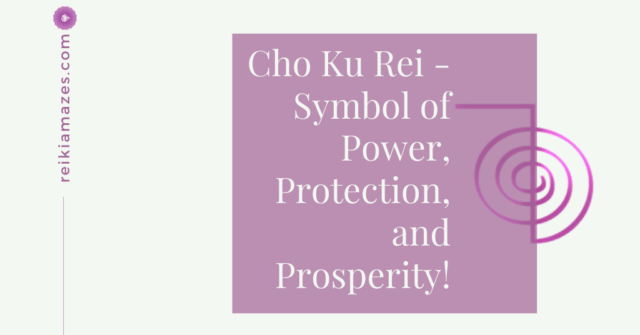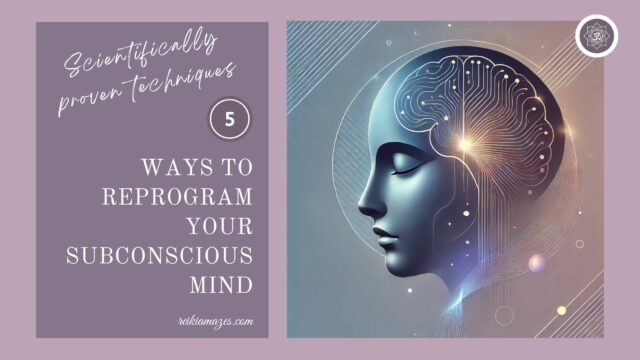Your beliefs shape your reality—influencing your thoughts, emotions, and actions in profound ways. Yet most people remain unaware of how these powerful belief systems form in the first place. Understanding the mechanics of belief formation is the first step toward consciously transforming limiting beliefs into empowering ones.
Joseph Murphy showed us our subconscious mind is powerful. He taught that changing our beliefs can change our lives.
The Anatomy of a Belief
Before diving into how beliefs form, let’s clarify what a belief actually is. A belief is essentially a thought that you’ve accepted as true. Once accepted, these thoughts become the filters through which you perceive and interpret your experiences.
Beliefs exist on a spectrum:
- Conscious beliefs: Those you’re aware of and can articulate
- Subconscious beliefs: Those operating below your awareness, often driving your behavior without your knowledge
- Core beliefs: The fundamental, deeply held convictions about yourself, others, and the world
Research in cognitive psychology suggests that approximately 95% of our mental activity occurs at the subconscious level, meaning most of our beliefs operate outside our conscious awareness.
How Subconscious Beliefs are Formed
Subconscious beliefs are primarily formed through these mechanisms:
1. Early Childhood Programming (Ages 0-7)
During the first seven years of life, your brain operates predominantly in theta wave state—a highly receptive, hypnosis-like condition. This makes young children particularly susceptible to absorbing information without critical filtering.
Dr. Bruce Lipton, cellular biologist and author of “The Biology of Belief,” explains that during this period, children’s brains are essentially “downloading” programs directly from their environment. They absorb beliefs from parents, caregivers, and early experiences without the cognitive ability to question or analyze them.
Research shows that approximately 70% of your core beliefs are formed during this critical period, creating the foundation for your adult perception of reality.
2. Repetition and Conditioning
Beliefs also form through repeated exposure to ideas, statements, or experiences. When you hear something consistently, your brain gradually accepts it as fact.
Neuroscience explains this through Hebb’s Law, often summarized as “neurons that fire together, wire together.” Repeated thoughts create neural pathways that become increasingly automatic with continued activation.
This is why advertising works—and why repeatedly hearing “you’re not good enough” in childhood can create a lifelong belief in personal inadequacy.
3. Emotional Experiences
Beliefs formed during emotionally charged experiences are particularly powerful. The amygdala, your brain’s emotional processing center, tags emotionally significant events as important, prioritizing them in memory formation.
Traumatic experiences can create instant beliefs that persist for decades. For example, someone who experiences a dog attack might form the belief “dogs are dangerous,” which can persist even in the face of contrary evidence.
4. Social Consensus and Authority
Humans are social creatures who naturally look to others for guidance on what to believe. When an idea is presented as accepted by the majority or by authority figures, we’re more likely to adopt it as true.
This explains why cultural beliefs are so powerful and why children readily accept information from teachers, religious leaders, and other authority figures.
5. Identity Protection
Your brain naturally seeks to maintain a coherent sense of self. Once you’ve integrated a belief into your identity, you’ll unconsciously look for evidence that supports it while dismissing contradictory information.
This “confirmation bias” explains why beliefs become self-reinforcing over time, regardless of whether they’re helpful or harmful.
Signs of Limiting Subconscious Beliefs
How do you know if subconscious beliefs are holding you back? Watch for these indicators:
- Recurring patterns of self-sabotage
- Persistent negative emotions in specific situations
- Strong emotional reactions that seem disproportionate
- Difficulty changing behaviors despite conscious desire
- Inconsistency between stated goals and actual results
- “Inexplicable” barriers to success
The Science of Subconscious Belief Change
Changing subconscious beliefs requires understanding how your brain creates and maintains neural pathways. Recent discoveries in neuroplasticity—your brain’s ability to reorganize itself by forming new neural connections—confirm that belief change is possible at any age.
The key is recognizing that simply trying to think differently isn’t enough. Effective belief change requires specific approaches that engage both your conscious and subconscious mind.
Proven Techniques for Transforming Subconscious Beliefs
1. Conscious Awareness and Identification
The first step in changing any belief is bringing it into conscious awareness. You can’t change what you don’t acknowledge.
Practical approach: Journaling about recurring patterns and emotional triggers can help uncover hidden beliefs. Ask yourself: “What would I have to believe is true to feel or act this way?”
Research from UCLA suggests that simply naming negative emotions and beliefs activates the prefrontal cortex, reducing amygdala activity and breaking the automaticity of habitual responses.
2. Belief Questioning and Reframing
Once identified, examine the evidence supporting and contradicting your belief. This cognitive approach weakens the neural pathways associated with limiting beliefs.
Practical approach: For each limiting belief, answer these questions:
- What evidence supports this belief?
- What evidence contradicts it?
- How did I originally form this belief?
- Is this belief serving my current goals and happiness?
- What would be a more empowering perspective?
3. Visualization and Mental Rehearsal
Your subconscious mind responds to mental imagery as if it were actual experience. By vividly imagining new scenarios, you can create new neural pathways that support desired beliefs.
Practical approach: Spend 10-15 minutes daily visualizing yourself embodying your new belief. Engage all your senses to make the visualization as real as possible.
A study published in the Journal of Sport and Exercise Psychology found that mental rehearsal activates the same neural pathways as physical practice, creating nearly identical neural growth.
4. Emotional Release Techniques
Beliefs with strong emotional components often require emotional processing before cognitive approaches can work effectively.
Practical approach: Techniques like Emotional Freedom Technique (EFT/tapping), somatic experiencing, or guided meditation can help release emotional charges associated with limiting beliefs.
Research in psychoneuroimmunology shows that emotional release techniques can reduce stress hormones and shift the autonomic nervous system from fight-or-flight to rest-and-digest mode, creating an optimal state for belief change.
5. Pattern Interruption
Breaking patterns associated with limiting beliefs creates space for new neural connections to form.
Practical approach: When you notice yourself thinking or acting from a limiting belief, interrupt the pattern with a physical action (like snapping a rubber band on your wrist) or a verbal cue (like saying “stop” out loud).
Neuroscience research shows that pattern interruption temporarily deactivates habitual neural pathways, creating an opportunity to consciously choose a different response.
6. Affirmations with Emotional Engagement
Properly formulated affirmations can help reprogram subconscious beliefs, but only when combined with emotional engagement.
Practical approach: Create affirmations that:
- Are stated in the present tense
- Focus on what you want (not what you don’t want)
- Feel believable (start with “I am becoming…” if necessary)
- Evoke positive emotions
A Stanford University study found that self-affirmation activities activate neural pathways associated with positive valuation and reward, supporting the formation of new beliefs.
7. Environmental Restructuring
Your environment constantly reinforces or challenges your beliefs. Restructuring your environment can support belief change.
Practical approach: Surround yourself with people, media, and environments that reflect your desired beliefs. Limit exposure to influences that reinforce limiting perspectives.
8. Hypnosis and Subliminal Programming
These approaches can bypass conscious resistance and directly access the subconscious mind.
Practical approach: Work with a qualified hypnotherapist or use reputable guided self-hypnosis recordings designed for belief change.
A meta-analysis published in the Journal of Consulting and Clinical Psychology found that hypnosis significantly enhanced the effectiveness of cognitive-behavioral therapy for a variety of conditions.
The Timeline of Belief Transformation
Changing deeply held beliefs is rarely an overnight process. Understanding the typical timeline can help maintain realistic expectations:
Phase 1: Awareness (1-4 weeks)
- Identifying limiting beliefs
- Connecting beliefs to behaviors and emotions
- Building motivation for change
Phase 2: Destabilization (2-8 weeks)
- Questioning and challenging beliefs
- Experiencing increased awareness of belief-driven patterns
- Possible emotional discomfort as old beliefs are challenged
Phase 3: Reconstruction (4-12 weeks)
- Regular practice of new thought patterns
- Experiencing occasional “relapses” to old beliefs
- Gradual formation of new neural pathways
Phase 4: Integration (3-12 months)
- New beliefs becoming increasingly automatic
- Reduced conscious effort required
- Behavioral changes becoming natural and consistent
Common Pitfalls in Belief Change
Be aware of these common obstacles to successful belief transformation:
1. Cognitive Dissonance
Your brain resists holding contradictory beliefs simultaneously. This can create discomfort when adopting new beliefs that conflict with existing ones.
Solution: Acknowledge the discomfort as a natural part of the process rather than a sign that the new belief is wrong.
2. The Elastic Band Effect
Like a stretched elastic band, your mind naturally tends to snap back to familiar patterns when you stop applying conscious effort.
Solution: Maintain consistent practice until new neural pathways are sufficiently established.
3. Environmental Contradiction
If your environment continues to reinforce old beliefs, change becomes significantly more difficult.
Solution: Whenever possible, modify your environment to support your new beliefs.
4. Insufficient Emotional Engagement
Purely intellectual approaches often fail because belief change requires emotional involvement.
Solution: Ensure your practice includes techniques that engage your emotions, not just your thoughts.
Recommended Read:
The Power of Your Subconscious Mind: What Science Says
5 Ways to Reprogram Your Subconscious Mind | Scientifically Proven Techniques
Can Thoughts Change Reality? The Science Behind Manifestation
7 Signs Your Subconscious Is Blocking You
Rewiring the Subconscious for Success: 5 Inspiring Case Studies
Conclusion & Your Action Plan
Destiny Designers, your subconscious mind is always listening! Now that you understand how your beliefs were formed and how to transform them, which technique resonates with you the most?
Remember that changing your subconscious beliefs is one of the most powerful ways to redesign your destiny from the inside out. Each limiting belief you transform creates space for new possibilities, new actions, and ultimately, new results in your life.
Action Steps to Begin Your Belief Transformation Journey
- Conduct a belief inventory: Set aside 30 minutes to journal about areas where you feel stuck or experience recurring negative emotions. Look for patterns that might indicate limiting beliefs.
- Choose one belief to work with: Select a limiting belief that significantly impacts your life but doesn’t feel overwhelmingly charged. Begin your practice with this belief.
- Create a belief change plan: Select 2-3 techniques from this article that resonate with you. Schedule specific times to practice them daily for at least 30 days.
- Enlist support: Share your belief change journey with a trusted friend, coach, or therapist who can provide encouragement and accountability.
- Track your progress: Keep a journal documenting your experiences, insights, and any shifts in your thoughts, emotions, or behaviors related to your target belief.
- Celebrate small wins: Acknowledge and celebrate every instance where you notice yourself thinking or acting from your new empowering belief.
- Practice self-compassion: Remember that belief change is a process, not an event. Be patient and kind with yourself as you navigate this powerful journey of transformation.
Drop a comment below sharing one limiting belief you’re ready to transform! And if you know a fellow Destiny Designer who’s struggling with old patterns and limiting beliefs, share this post with them.
Don’t forget to save this post for later and share it with your transformation tribe. We’re all in this journey together, designing our destinies one belief at a time.










![26 Reiki Points For Self Treatment – Refresh Yourself Everyday-[Updated]](https://reikiamazes.com/wp-content/uploads/./Feature-Image-Small.jpg)


